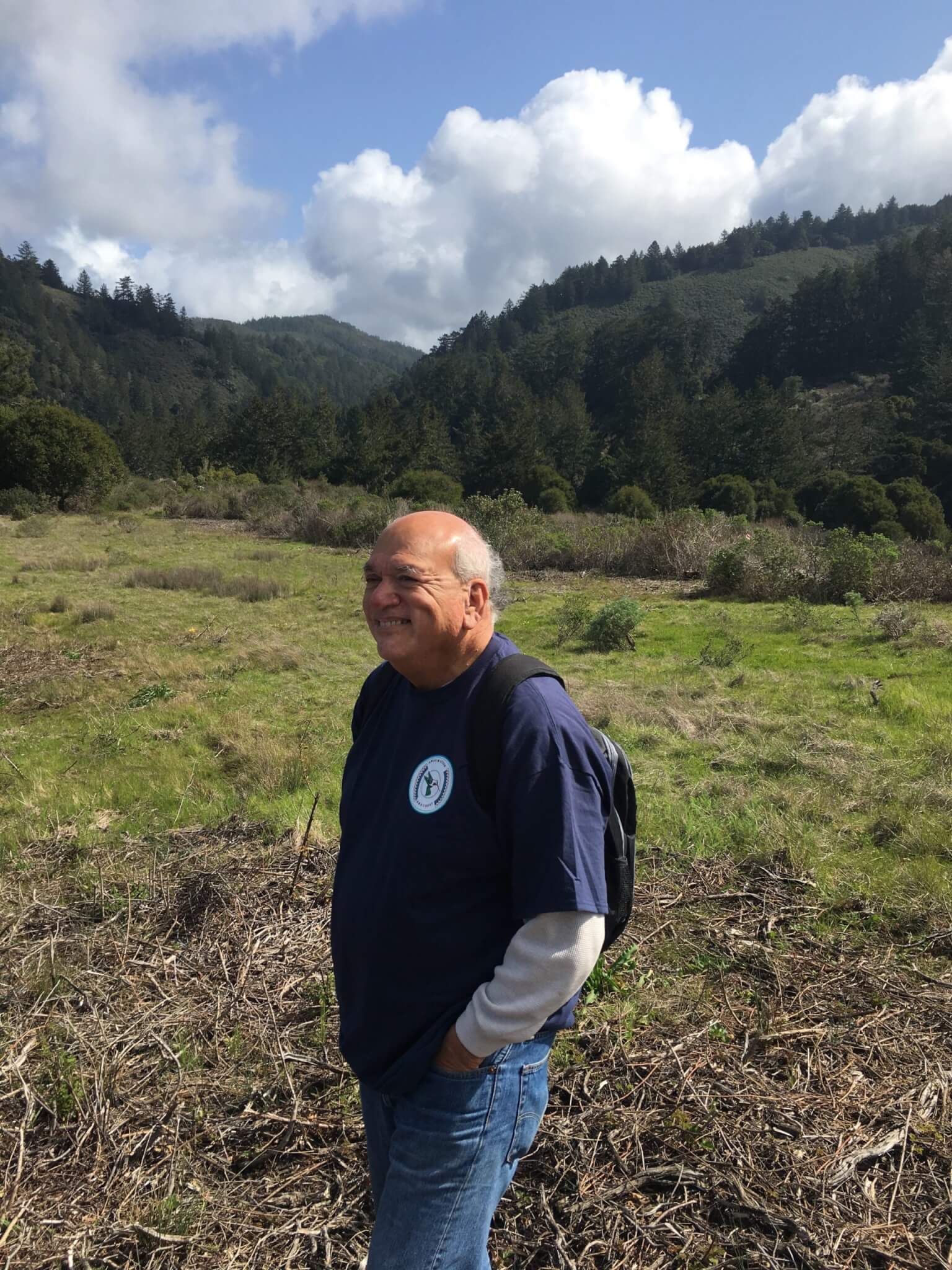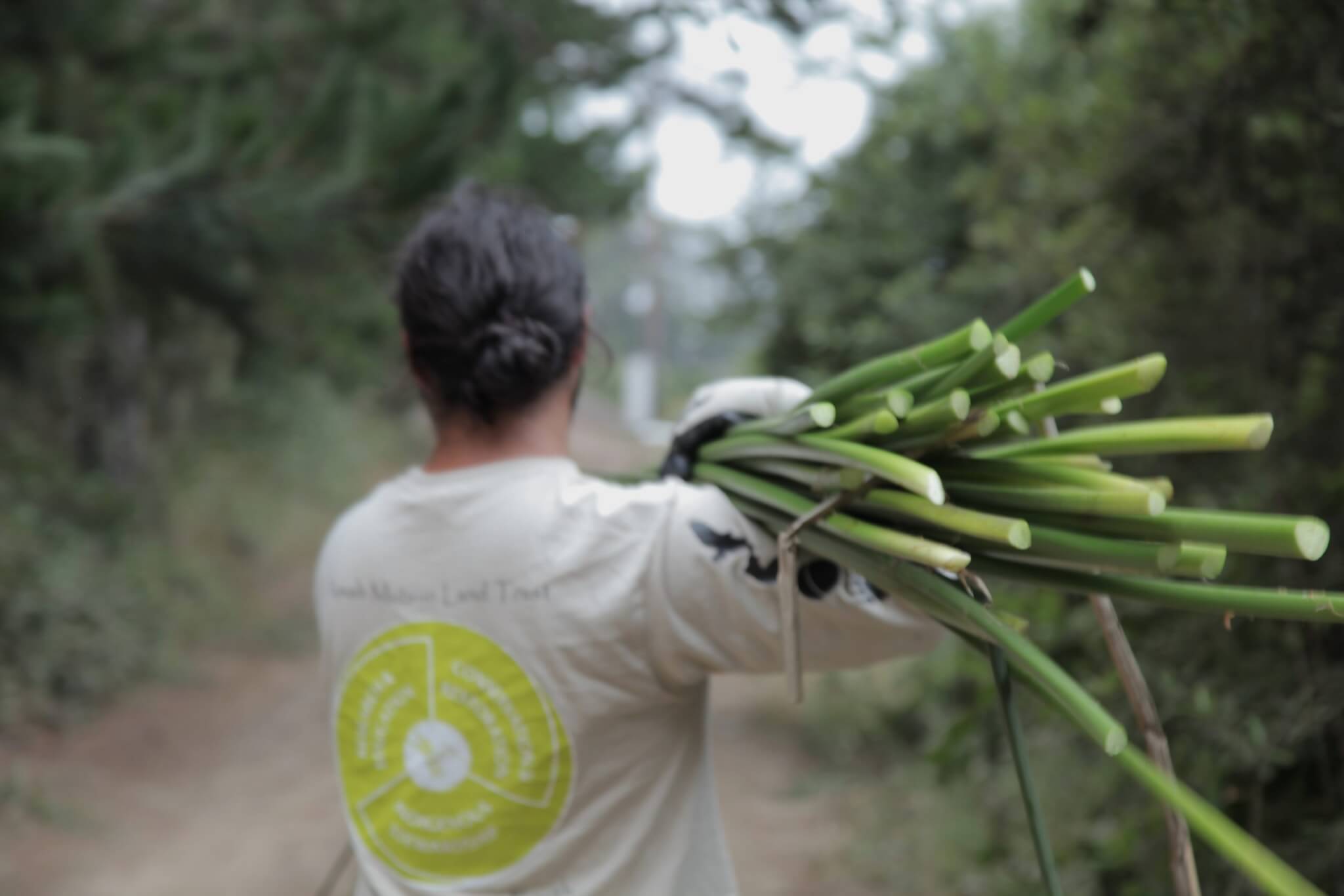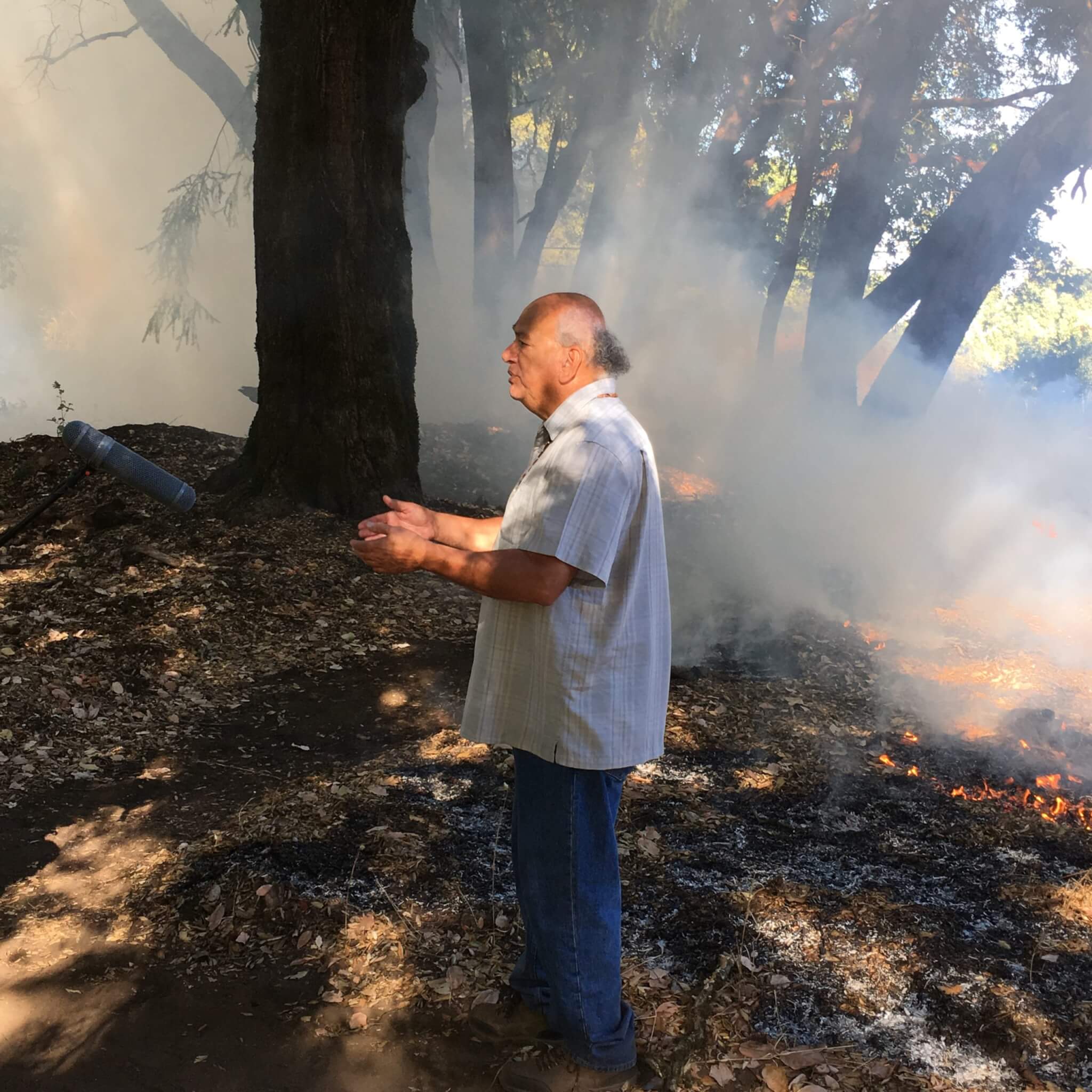SemperVoices: The True Riches of Relationships with the Land
The Santa Cruz Mountains are the ancestral lands for many Indigenous Peoples. As Sempervirens Fund is accountable to our mission, to protect and preserve coast redwood forests, we also acknowledge we must honor the history of the land, forests, waterways, and the animals. We are committed to healing these relationships and are grateful to work closely with the Amah Mutsun Tribal Band and the Muwekma Ohlone Tribe to restore the land, where they can reclaim their cultural traditions and practice their religious ceremonies. These and other Indigenous Peoples have cared for these forests and mountains for thousands of years and will for many generations to come.
The land is part of who we are. It is our history. We connected with Valentin Lopez, the chairman of the Amah Mutsun Tribal Band, about efforts to re-learn and reclaim cultural traditions to care for the earth in their ancestral territory. He was also be our featured guest for our October 2020 Under the Redwoods webinar. You can see it and our other webinars here.
Tell us about your role with the Amah Mutsun Tribal Band and the land trust.
I’ve been the chairman since 2003 of the Amah Mutsun Tribal Band. In 2006, our elders came to the council. Our creation story tells us to take care of mother earth and we started looking for a way to do this. We worked with Pinnacles [National Park] and State Parks, and we began working with many others so we could have access to our traditional tribal territory. And in 2012 we developed the Amah Mutsun Land Trust with the support of Sempervirens Fund.
You once said: “True riches are not what’s in your bank account but your relationships and one of the most important is your relationship with Mother Earth.” What defines true riches for you?
First, tribal knowledge of our ancestors, a person who knew our ceremonies was very valuable, a person who knew our songs was very valuable, a person who knew how to take care of geese, and mammals, and plants, and mother earth was very valuable. That allowed us to fulfill our obligation to our creator.
Second, relationships with the land, mother earth, trees, animals, and our families, neighboring tribes, and to our Creator.
What has happened since the 2006 meeting with the elders?
At Pinnacles, they had a new superintendent who was interested in a relationship with the tribe. We met with him and he asked us to become part of Pinnacles and explore how the land and wildlife was being stewarded. They had plants for basketry and a large field of traditional native grasses and they wanted to know about how we could steward the lands, but the truth was, because of our brutal history we lost a lot of our traditional knowledge. How do we say yes?
We went back to council and council said we have to recognize it is isn’t our fault, but we had to restore our knowledge. The ones we trust are those that work on the environment. You only get one chance with us.
We said yes [to the partnership]. That was hard to do and to trust anyone outside the tribe. It, and other efforts since, have helped restore a lot of the knowledge we lost.
Today, we have [agreements and] access to close to 140,000 acres. Not that we are accessing it all, but we work with land trusts, state parks, and the Bureau of Land Management, and we have project areas all over for research, surveys, and stewardship.
Why is re-learning traditional practices important today?
The native plants before contact were our medicine, food, and building materials—our grocery, our pharmacy, and general store. The genocide that happened to the Indians happened to our environments. They brought in their alfalfa, oats, and barley and they took over the landscapes. Today our grasses are 96% non-native.
What’s important for us are surveys. We look for patches of native plants so we can collect seeds so we can replant them in other spots, and we try to cultivate that patch to grow bigger and bigger every year.
The other thing we recognize is we’ve been talking only about stewardship. When I talk to funders, they don’t fund that. To a lot of organizations stewardship means put a fence around it, put on a trail, and put up signs. That’s ridiculous. Stewardship is relationships with the land, the ground, the water, the insects, the air. They are our relatives. Today many are working hard to develop stewardship programs that follow what we are talking about. Environmental organizations want to take care of Mother Earth but they don’t know how to do it.

Members of the Amah Mutsun Land Trust Native Stewardship Corps in 2019. Photo credit Ally Arganbright.
Tell us about the Native Stewardship Corps.
We started it when state parks and University of California Berkeley were doing archaeological work and our youth started working with them and they were very curious about the work. When we started the land trust, stewardship was always part of it—returning our youth to the territories to learn.
A lot of the stewards worked for two years and carried that knowledge out into careers in other organizations, but we needed stewards to learn and teach the knowledge for future generations.
As you’ve re-learned cultural traditions with the stewardship corps, what have been some surprising outcomes?
We knew about the use of fire and frequent burning to reduce the risk of catastrophic fires and to enhance the native plants—a lot of seeds germinate with fire, heat, and smoke—and when we returned fire to the land we saw a great abundance of plants.
People didn’t believe us that fire and our traditions would be healthy for the ground. Fire softens up the seeds. Opens up the land so the sun will beat down and help the germination process. Now the scientists say, let’s do this!
What does Indigenous Peoples’ Day mean to you?
The true history of Native people has never been told, so they celebrate without telling the truth. Truly celebrate by telling the true history. Institutions that perpetrated the destruction of Native people should talk about what they are doing to rectify that and heal themselves. Perpetrators need to heal for the atrocities they committed. The day does nothing for Native people.
How do your cultural traditions inform our approaches to climate resilience?
Logical to see, but we didn’t put 2 plus 2 together: the way our ancestors managed the land is critical for addressing climate change issues. Our ancestors tell us how to develop sustainable environments. Native plant roots systems go down 12-14-18 inches deep and are fire- and drought-resistant and resistant to disease. There’s a lot of advantages to native plants.
Low intensity fires go quickly, but don’t set the big trees on fire and that’s great for managing the land.
What is your experience with discovering new plants after fire?
There was a fire at Pinnacles National Park in 2011. Deer grasses are important for basketry. Before the fire the deer grasses would have 3 to 5 stalks per plant. After the fire they had many more stalks per plant, so that improved. Redmaids, poppies, tobacco, and other culturally significant native plants were also more abundant after the fire. It is rewarding to discover what is waiting in the soil.
It seems the Amah Mutsun are today’s community scientists.
When I first went to college, I saw: psychology, sociology, and science and I wondered what science was. I looked it up. Science is the study of knowledge. Our ancestors were scientists— they studied knowledge: how to manage our land with fires, how to cultivate plants, berries, and grasses, and how to take care of animals and insects. For migrating geese, one of their favorite foods are insects. We would steward land to have an abundance of insects for geese, so they could get their body weight back so they could continue their journey.
What has surprised you most since you began this work?
That there’s interest in helping our tribe. We would have never believed that an organization like Sempervirens Fund would have sponsored us, or state parks would help us get a grant to steward on their lands.
Restoring the landscapes of Central California means restoring a coastal prairie. The Spanish Mission period outlawed fire, and trees and shrubs encroached and the prairies were gone and the biodiversity is gone. Restoring the coastal prairie restores biodiversity. Coastal redwoods were in the foothills; they were not on the coast. The shrubs came first, then the Douglas fir, then the redwoods.
Why are the redwoods of the Santa Cruz mountains so important?
They are important because they are important to the species that depend on them. They were important for housing and firewood. Birds preferred the trees. We don’t have a lot of knowledge about them because we relied on oak, pine, and hazel. We had the same responsibility for them and we know that the bark was resistant to fire so we didn’t worry much about them burning.
Do the Amah Mutsun have a name for coast redwoods?
hop (pronounced hōp)
Hear more from Val Lopez Under the Redwoods. In October 2020, we discussed the cultural land traditions and needs of Indigenous people in the Santa Cruz Mountains region.
To learn more about the Amah Mutsun Land Trust, visit amahmutsunlandtrust.org


